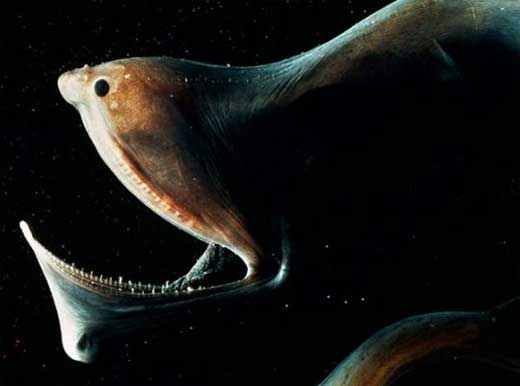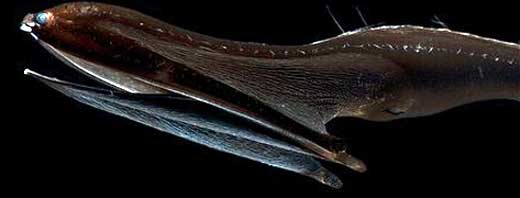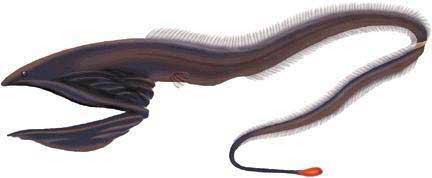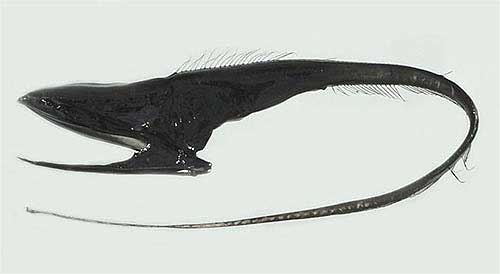Gulper Eel – Pelican Eel, Frightening Deep Sea Jaws

The gulper eel is also known as the pelican eel, and is found at depths between 500 m and 3 km (1,640 feet to 1.83 miles) in tropical and temperate seas. It is has a very unusual head, with massive jaws that enable it to swallow prey as large as itself, and sometimes larger!
The gulper eel has a luminous organ at the end of its tail, since sunlight does not reach the depths that it normally lives in. This is used as a lure, or decoy… due to the extreme depths this lives in, detailed studies have not been made of its habits.

Physical Characteristics
Gulper eels are black and some subspecies may have a thin lateral white stripe. They are ray-finned fish, and only resemble eels in a their appearance.
The pelican eel grows up to 80 cm long (31 inches) and has a long thin body, with a large head. The huge jaws have many rows of teeth, and the eel catches its prey by opening its mouth wide, and using it as a net.

The bioluminescent organ at the end of the tail, acts as bait for fish. Due to their body shape, they are bad at swimming, and cannot hunt for fish like other predators do. They rely on their “tail light” to attract prey. They feed on fish, plankton, copepods and shrimp.

Weird Physiology
What makes the gulper eel so different from other fish, is not so much what it has, but what it doesn’t have. They do not have pelvic fins, swim bladders, or scales. Their muscle segments have a “V-shape”, while other fish have “W-shaped” muscle segments.
The lower jaw is hinged at the base of the head, with no body mass behind it, making the head look disproportionately large. When it feeds on prey, water that is ingested is expelled via the gills.
Strangely, when males reach sexual maturity, they gain a better sense of smell, but their teeth become weaker, and the strength of their jaws decreases. Females do not undergo significant change during their adult phase.
It is thought that gulper eels die after spawning, which could account for the changes that affect males during mating: larger olfactory organs are more useful for mating. Also, if they are supposed to die after spawning, then it makes sense that the teeth and jaws degrade.
